One of the most enjoyable parts of travelling is experiencing a moment of serendipity, that is to say coming across something unexpected, or in other words a “happy accident”. During my most recent trip to South Korea the weather was pretty miserable but pausing for shelter on a bridge during a hard downpour yielded a particularly memorable scene…
The short video was taken to the south of Jeonju Hanok Village which I was visiting for the second time after my inaugural visit the year before. While going somewhere again is never quite as special as the first time there are always new things to discover if you get away from the more popular areas and allow yourself to get lost.
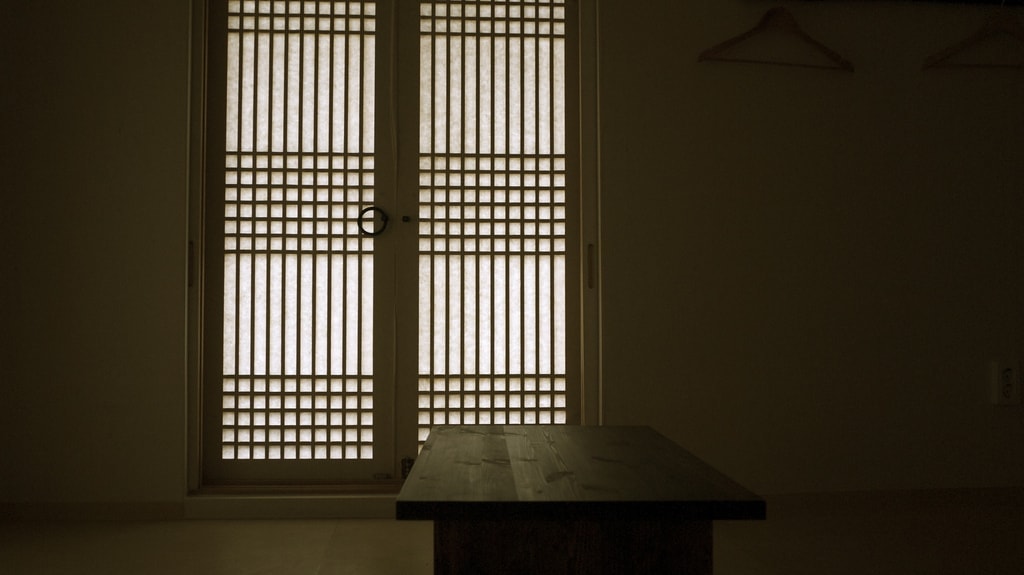
Another enjoyable moment came when I was invited into a hanok (traditional Korean house) which had recently been reconstructed after being relocated from another part of the country due to some turbulent history in Korea’s colonial past (I’m not entirely sure of the exact story).
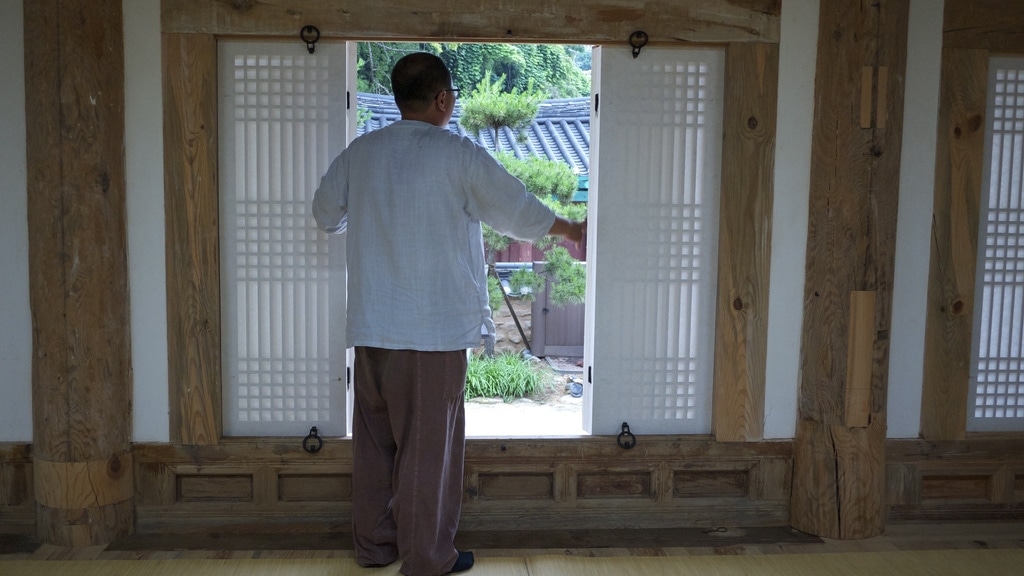
The proprietor was very generous in going out of his way to show me around – often by merely indicating your interest in something beyond a superficial level you will get a far more valuable experience than simply turning up, taking a few pictures and leaving again.
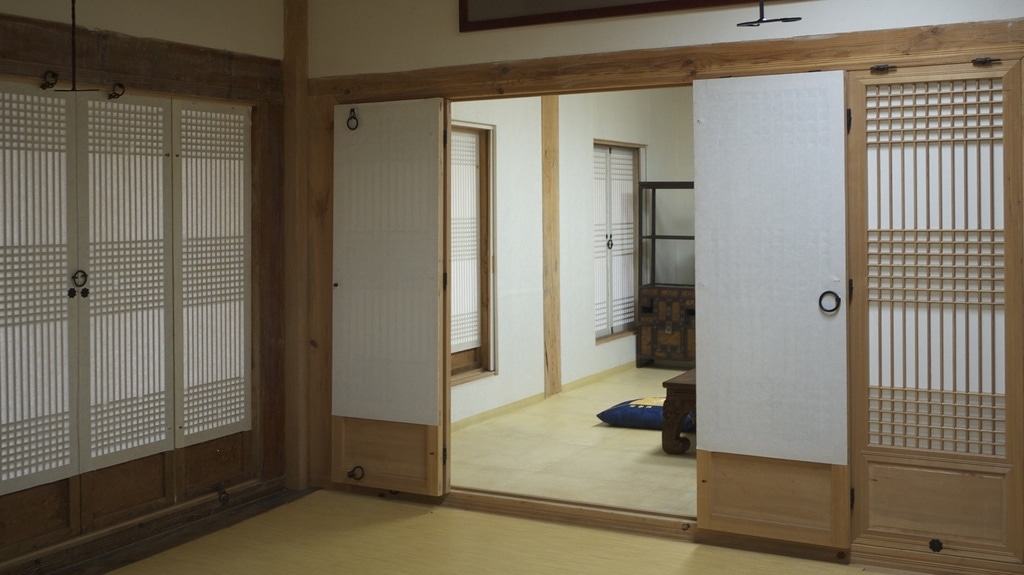
I was struck by the beauty of both the building’s simplicity and the craftsmanship which had gone into its construction, primarily out of wood for the frame, hanji (Korean paper) for the doors, and iron fixtures holding things together. There was a main house for the owner, an outhouse for guests, and a large hall where students could be lectured.
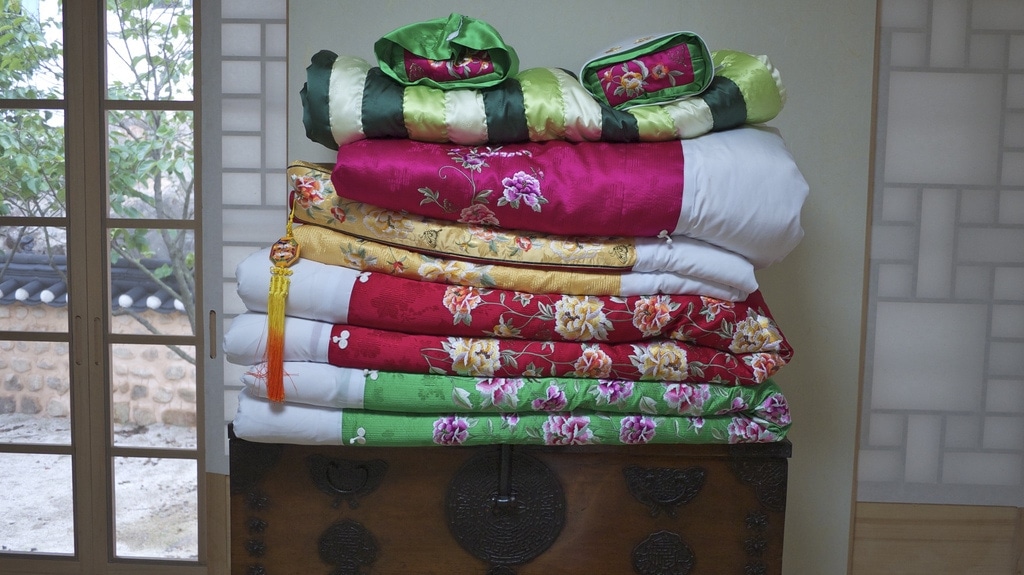
Since the rooms in a hanok are often multipurpose the thin mattresses for sleeping on are folded away each day. The ones here were made of elaborately pattered silk indicating the high status of the original owner.
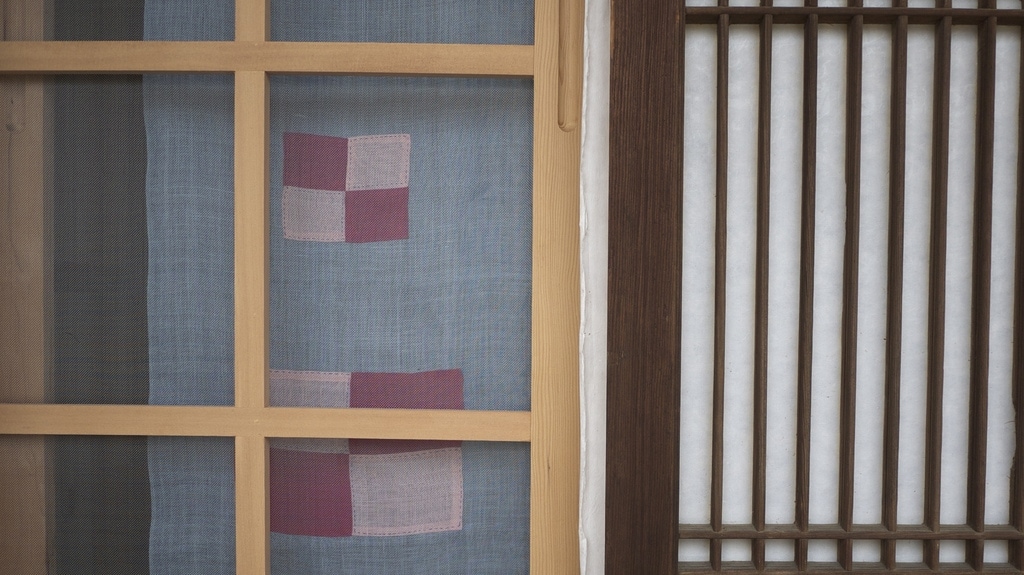
During the colonial era (1910 – 1945), there was a systematic attempt by the Japanese government to destroy traditional Korean architecture. One of the ways in which the Korean people resisted the Japanese Nationalist Agenda was to build traditional Korean homes and the houses in Jeonju Hanok Village are a particularly notable example of this.
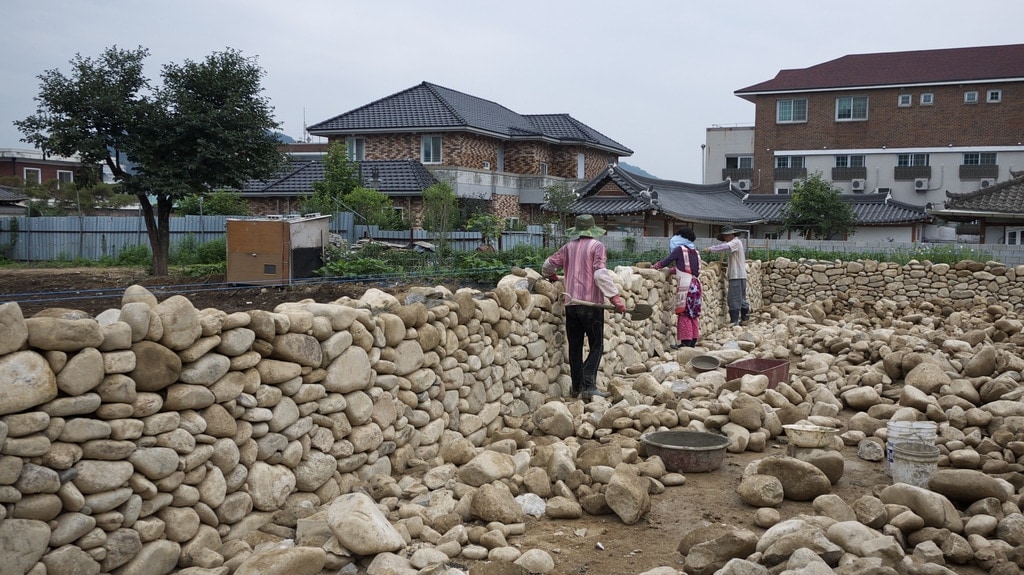
It’s good to see the building of traditional houses in Korea continuing today although how much this is about preserving tradition vs. attracting tourism is debatable.

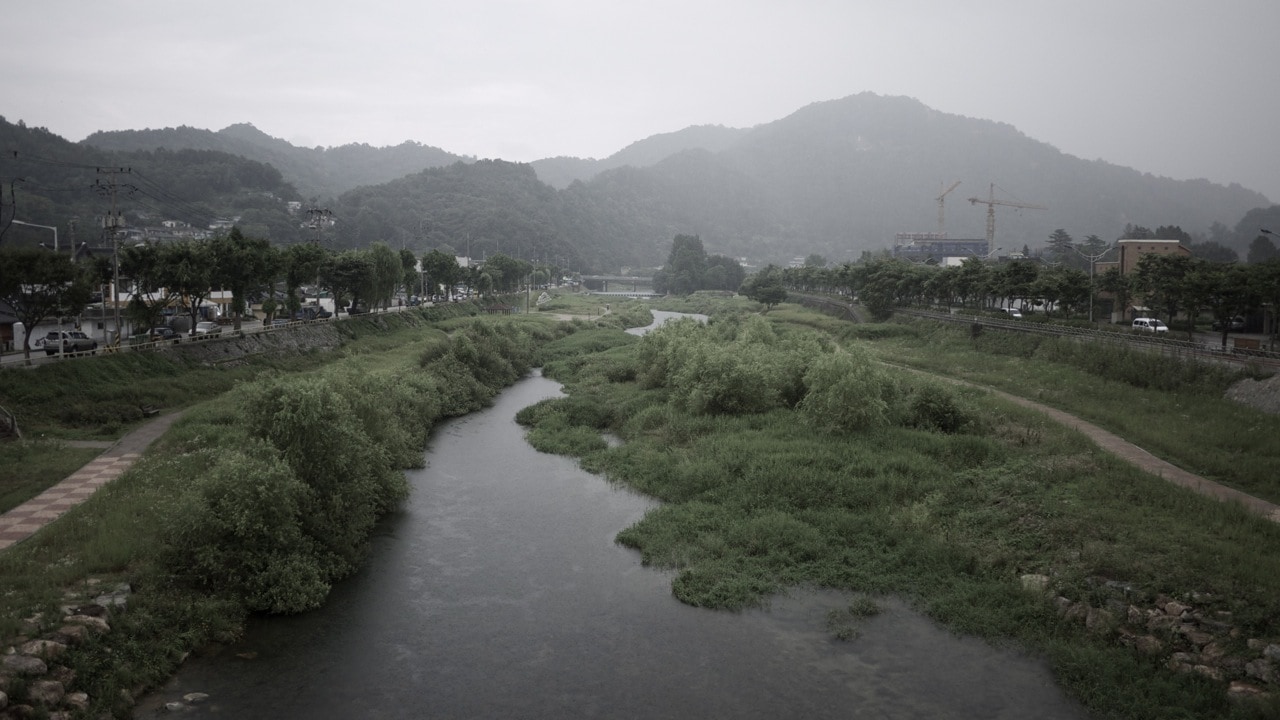
Reply